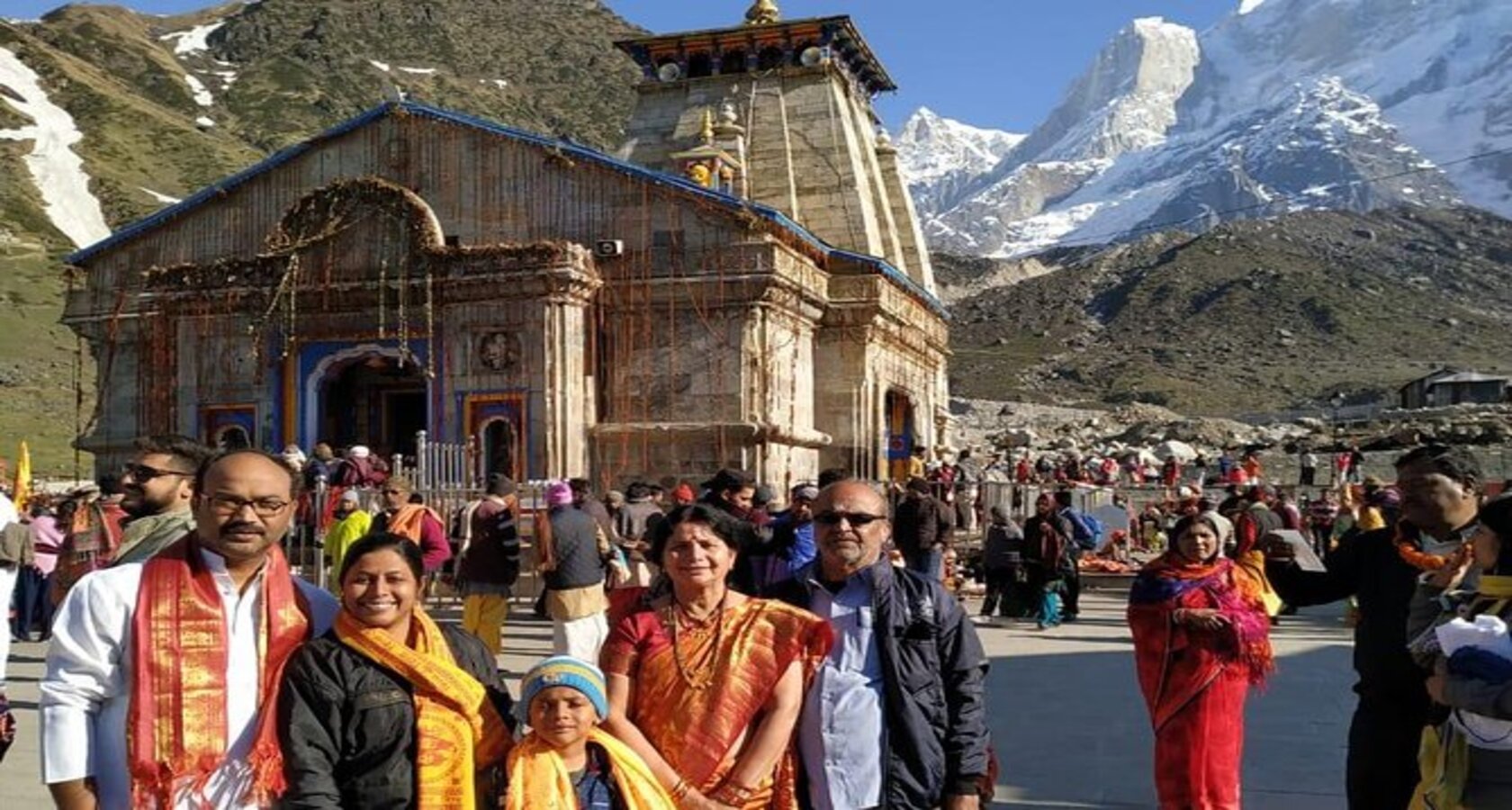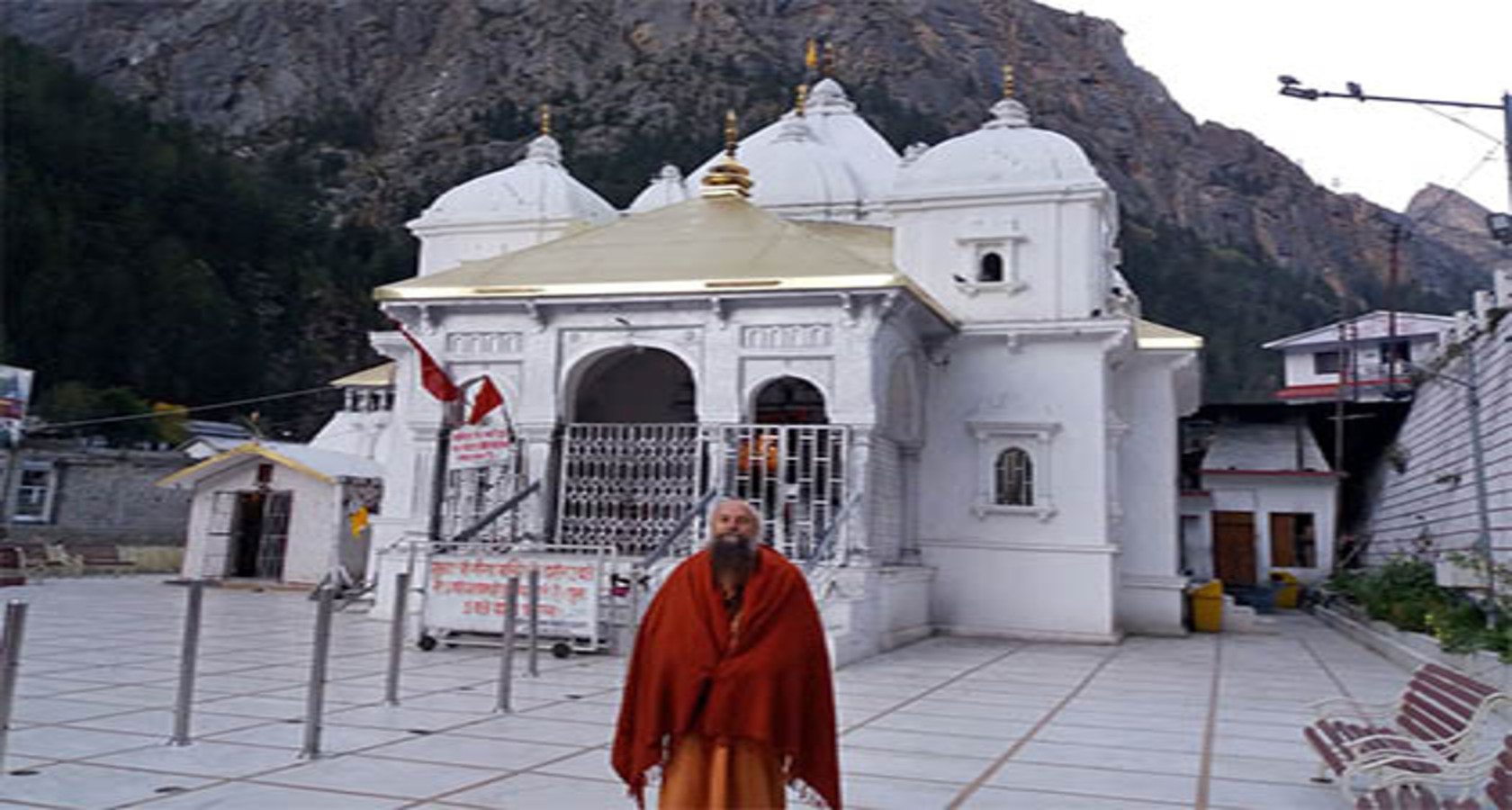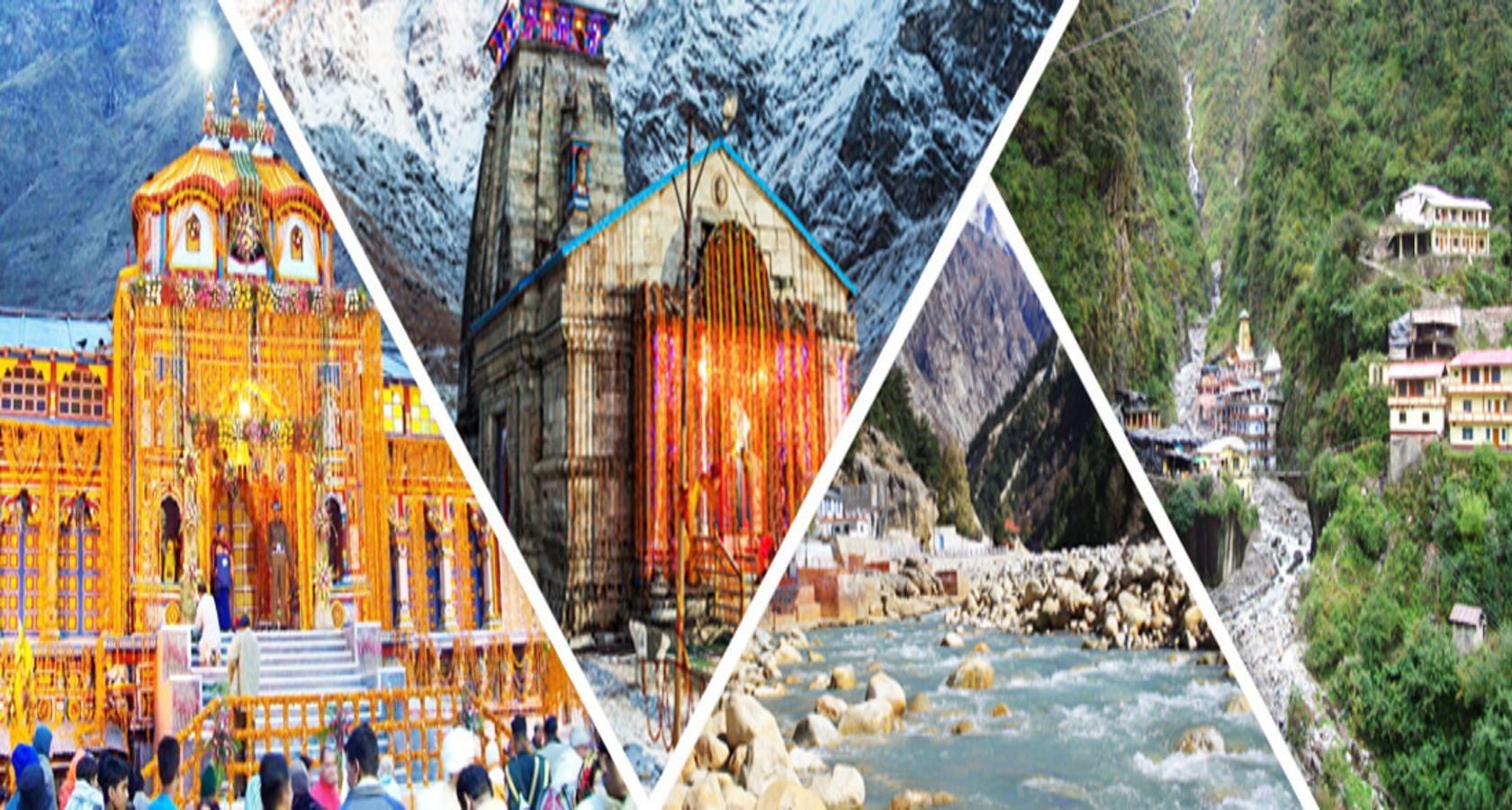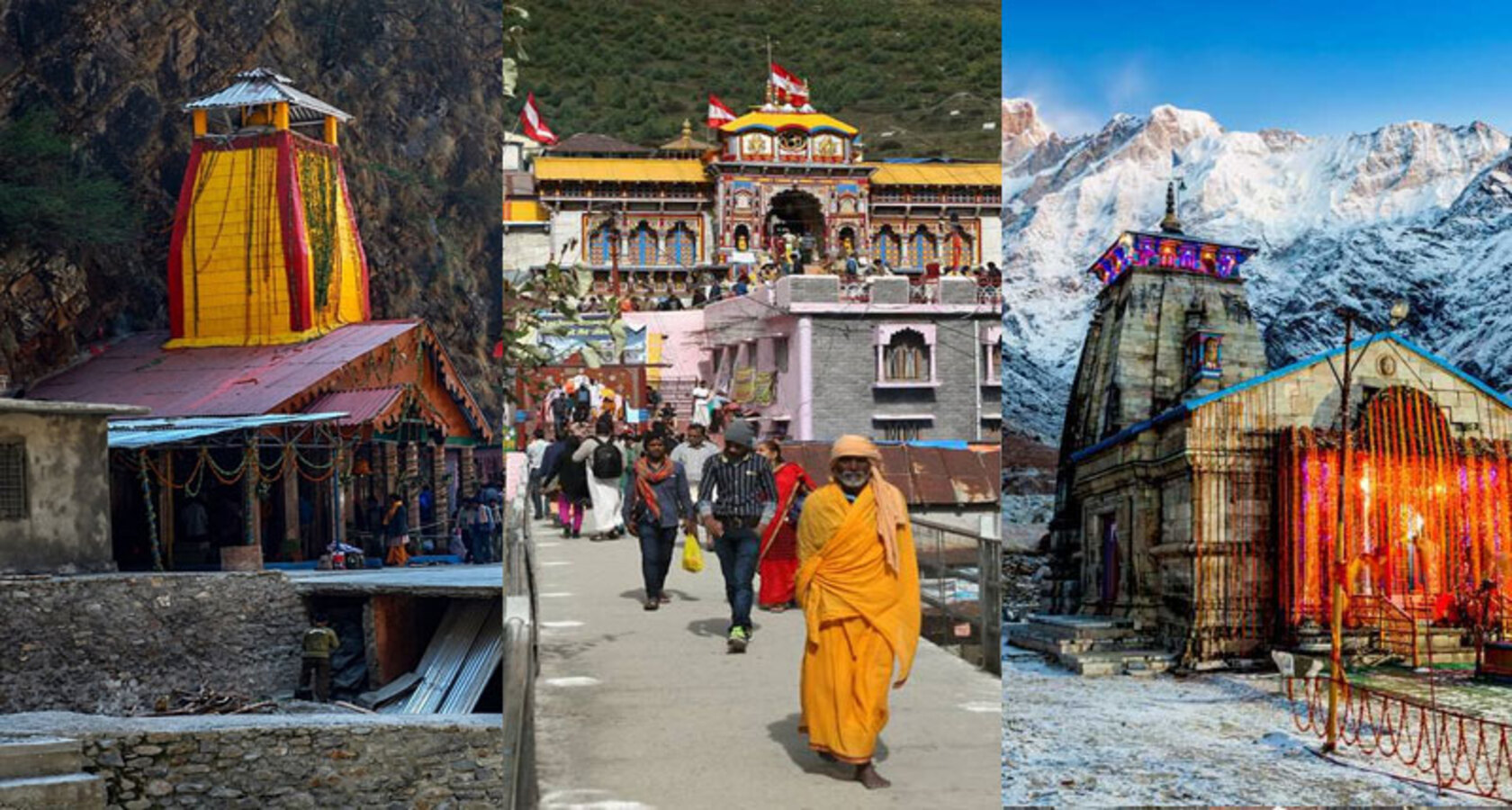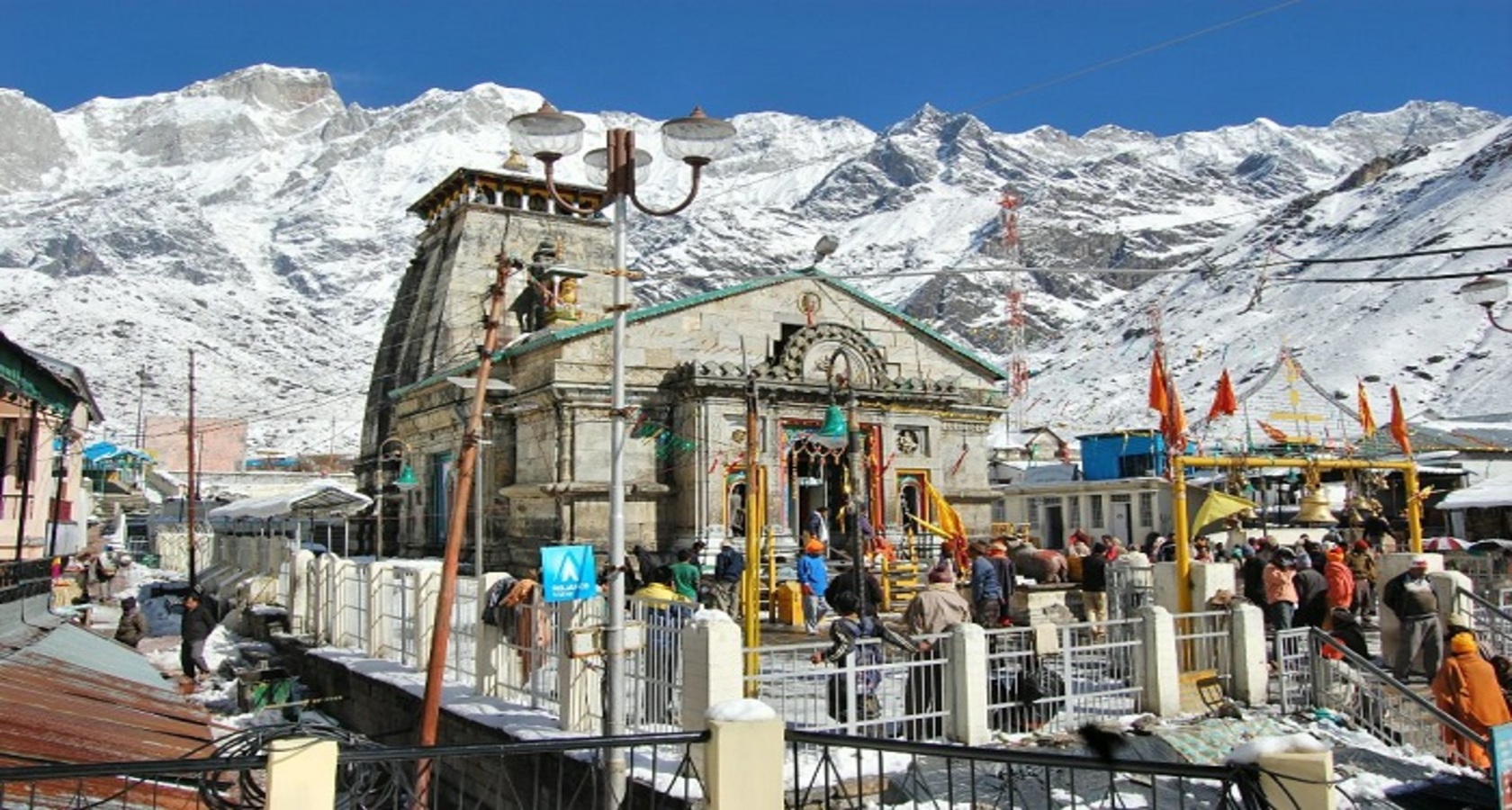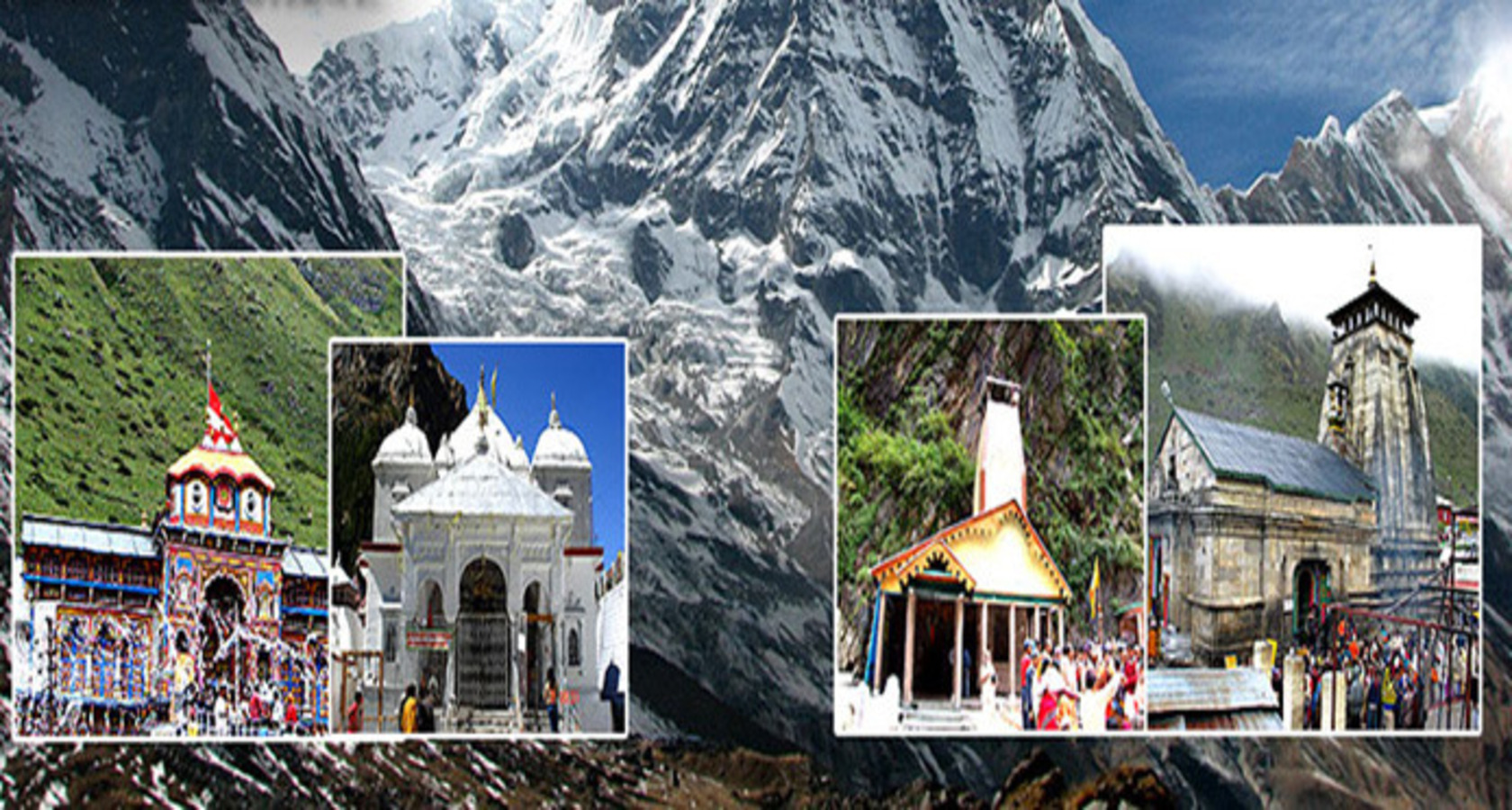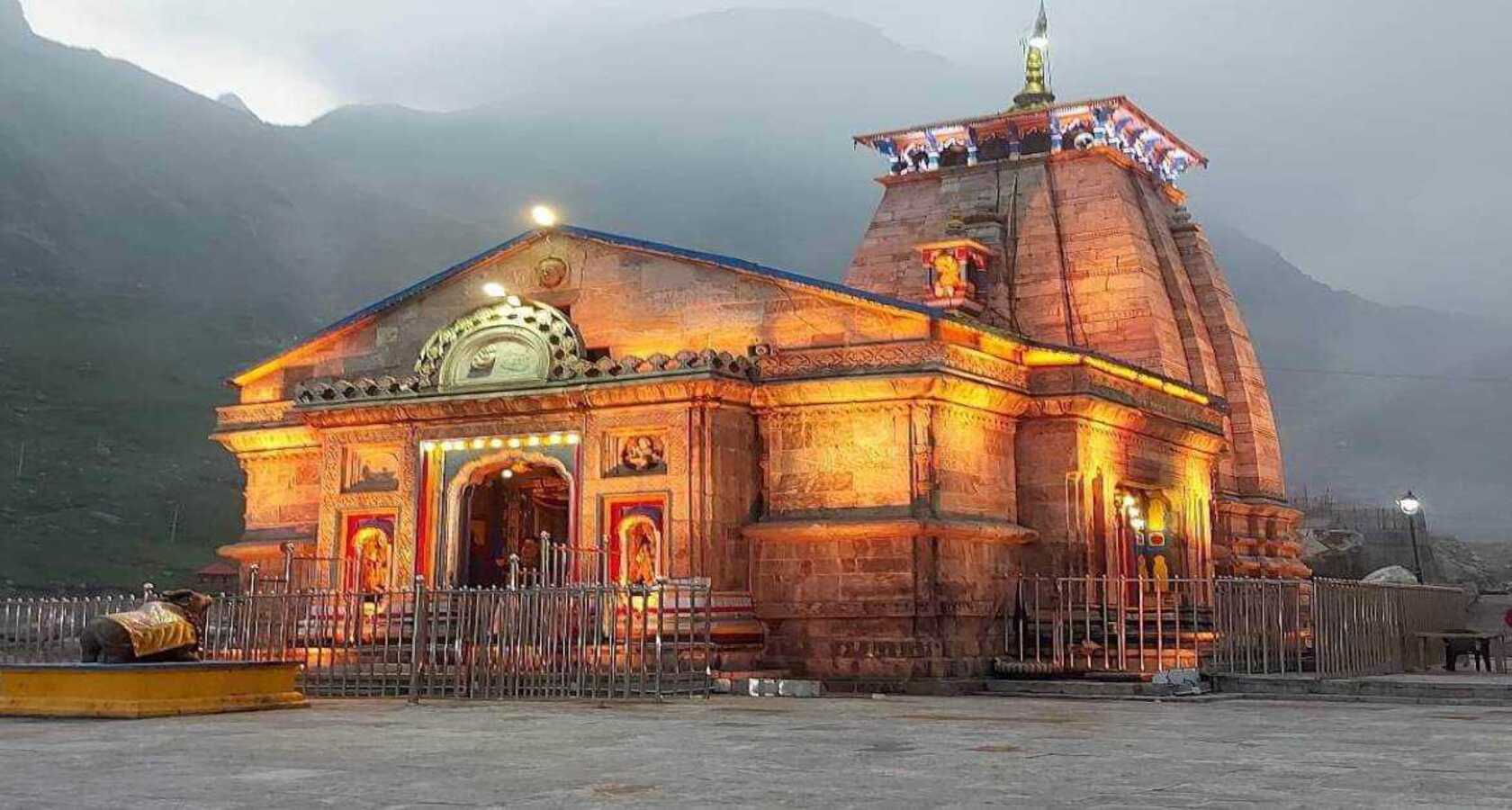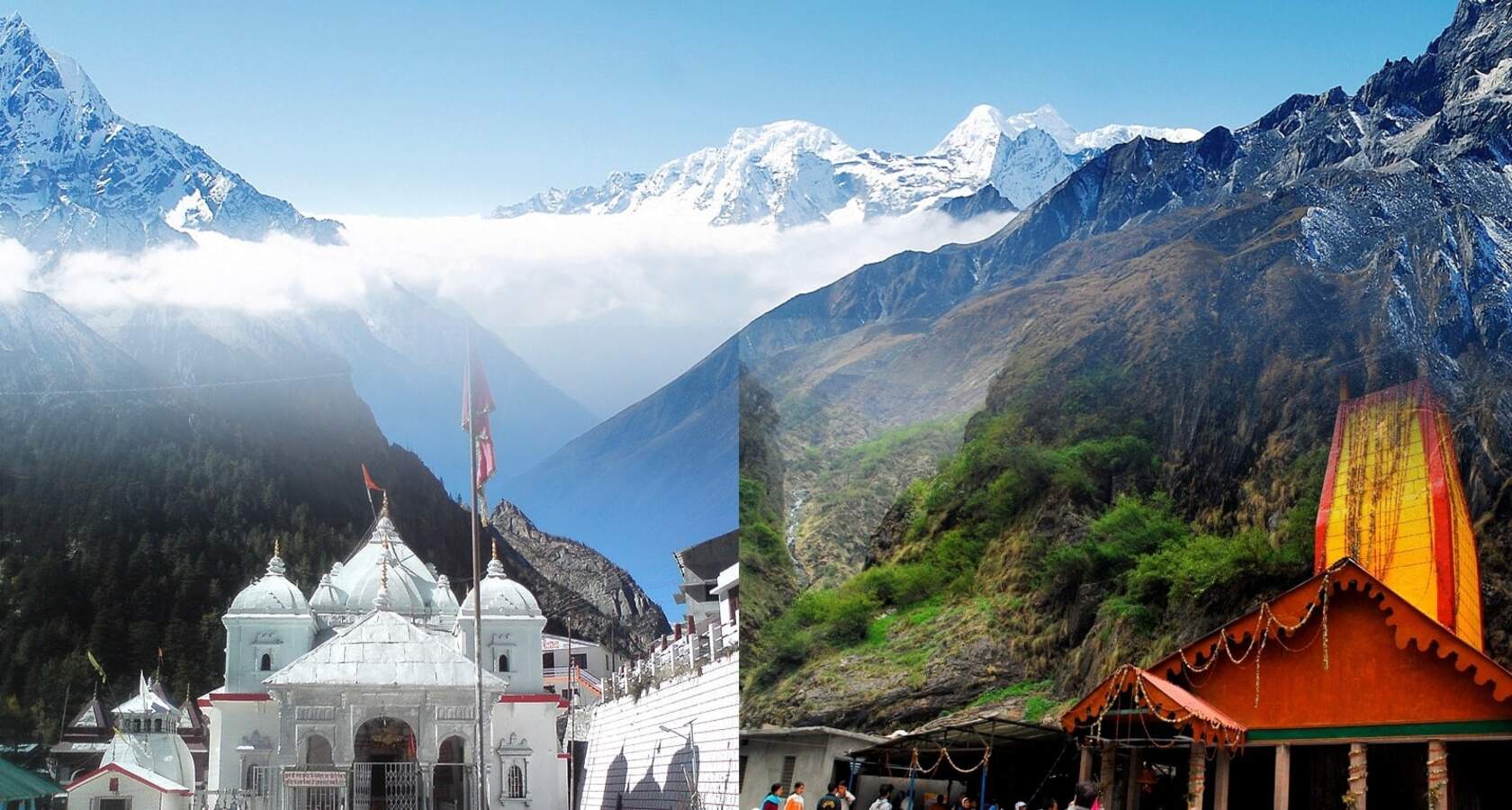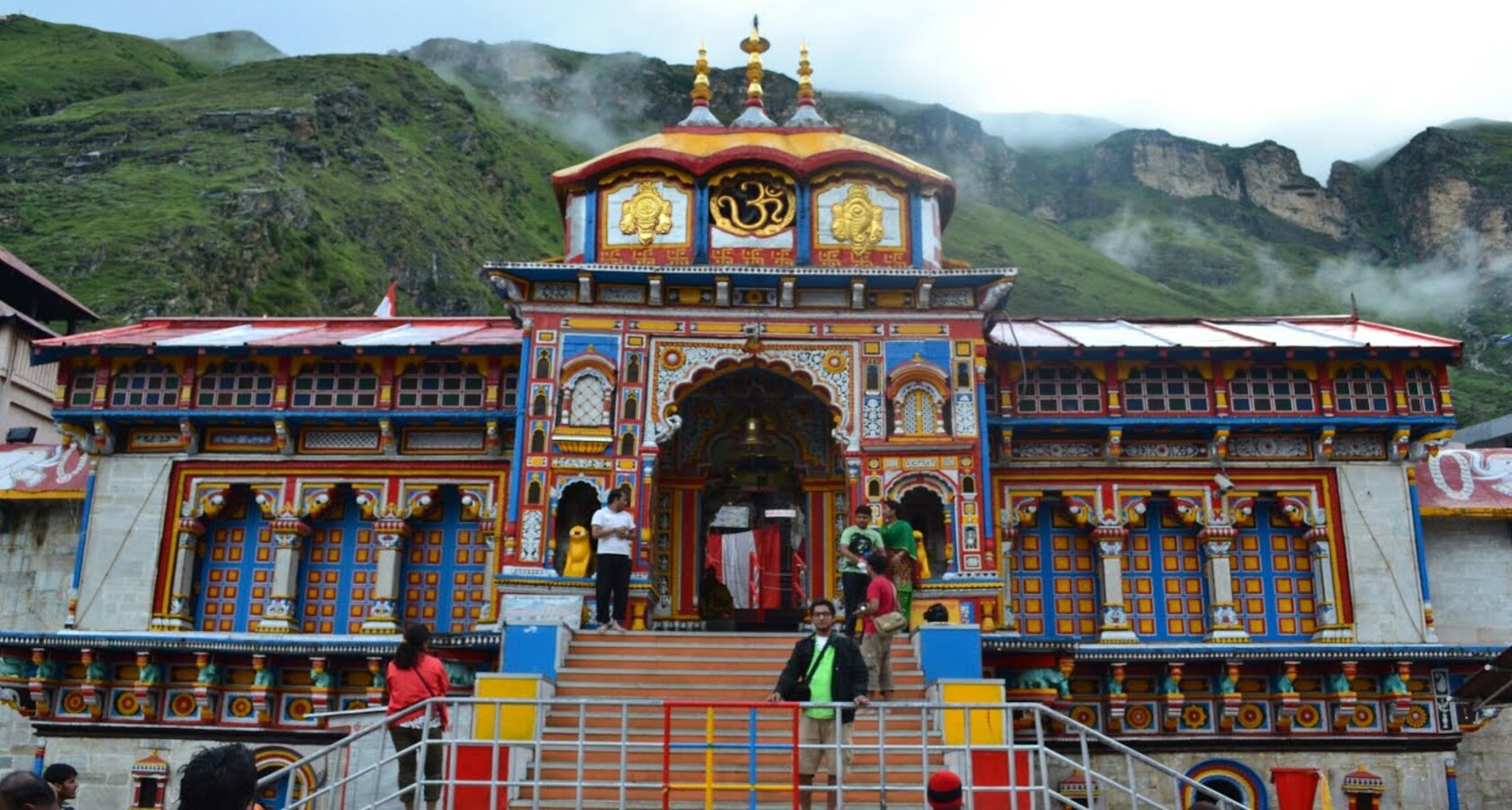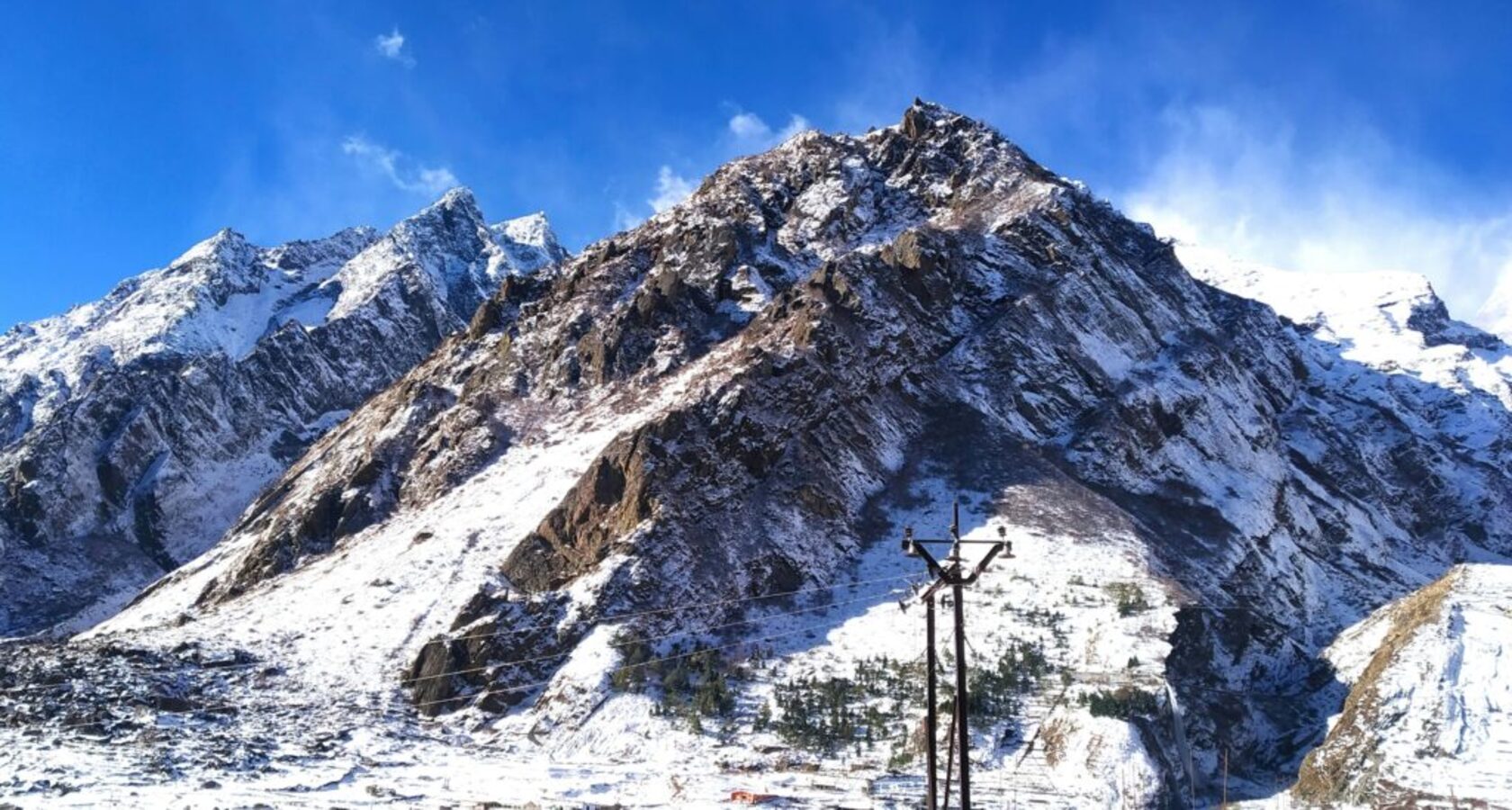
Char Dham Yatra with Vaishno Devi Tour Package Cost:20,000 Per Person Group Tour.
Amritsar, Jwalaji, and Vaishno Devi during the Char Dham Yatra
Overview
You will get the opportunity to see several temples and shrines in four different states with this vacation package. Visits to the Char Dham Temples of Kedarnath, Badrinath, Gangotri, and Yamunotri in Uttarakhand, the Shri Mata Vaishno Devi Shrine in Jammu and Kashmir, the Jwala Devi Temple in Himachal Pradesh, and the stunning city of Amritsar are all included in this Chardham tour package. The areas of Jammu, Katra, Kangra, Amritsar, Haridwar, Barkot, Uttarkashi, Guptkashi, Pipalkoti, Srinagar, and Rishikesh are all included in this itinerary, which starts in Delhi. To guarantee a seamless and enjoyable yatra experience, all essential transport arrangements and lodgings will be made throughout the tour.
The tour's highlights include:
The shrine of Shri Mata Vaishno Devi
Temple of Jwala Devi
Temple of Gold
Bagh Jallianwala
Museum of Maharaja Ranjit Singh
Ceremony for Flag Retreat at the Wagah Border
Har Ki Pauri's Aarti
Temple of Mansa Devi
The Kempty Falls
Cave of Prakateshwar
Temple of Kashi Vishwanath
Temple of Ardhanarishvara
Temple of Shri Narsingh
Samadhi Adi Shankaracharya
Gufa Vyas
Bheem Pul
Schedule:
Day 1: Arrive in Delhi
After meeting with our agent at the Delhi airport or train station, you will be taken to your hotel.
Day 2: Flight from Delhi to Jammu to Katra, 50 kilometers, 2 hours
After breakfast in the morning, head to the airport to catch the aircraft to Jammu. Meet our agent when you arrive, then take a car to Jammu. Check in at the hotel when you arrive. Spend the night at the hotel.
Day 3: Vaishno Devi - Katra - Katra
In the morning, begin the 13.5-kilometer trip to the holy shrine for Mata Shri Vaishno Devi Jee's darshan. Return to Katra later. Check in at the hotel when you arrive. Spend the night at the hotel
Day 4: Travel 260 kilometers in 6 hours from Katra to Kangra to Jwalaji
After breakfast in the morning, travel via Kangra to the Jwalaji Temple. Check into the hotel as you arrive. Free to visit the temple in the evening. Spend the night at the hotel.
According to ancient tradition, the gods were plagued by demons who ruled over the Himalayan highlands. The gods chose to kill them under the leadership of Lord Vishnu. The gods concentrated their energies into a massive flame that erupted from the ground. A young girl looks out of the fire. She is considered the first "Shakti," or Adishakti.
She was raised in Prajapati Daksha's household and subsequently became Lord Shiva's spouse. She is also known as Sati or Parvati. She killed herself when her father insulted Lord Shiva because she could not stand it. When Lord Shiva learned of his wife's passing, his anger became uncontrollable, and he started to hunt the three worlds while clutching Sati's body. The other gods begged Lord Vishnu for assistance as they shuddered in His anger. A barrage of arrows fired by Lord Vishnu struck Sati's body, causing it to be torn to pieces. The fifty-one sacred Shaktipeeths formed at the locations where the fragments fell.
The goddess manifests as a little flame that shines flawlessly blue through cracks in the ancient granite at Jwalaji (610m), where Sati's tongue dropped. It is believed that even the Pandavas have been to this hallowed location.
Day 5: Travel 235 miles in 5–6 hours from Jwalaji to Amritsar
Drive to Amritsar in the morning following Pooja darshan at Jwala ji temple. Check in at the hotel when you arrive. Spend the night at the hotel.
Day 6: Amritsar
following breakfast. Begin your city tour with the blessings of Golden Temple, the most significant Sikh temple and a living representation of the Sikhs' spiritual and historical traditions. For Sikhs, Golden Temple is also known as Mecca. Next, go to Jallianwala Bagh, where hundreds of civilians were killed on April 13, 1919, when British and Gurkha forces opened fire on an unarmed, prohibited gathering. Visit the Maharaja Ranjit Singh Summer Palace Museum, located in the center of Ram Bagh, Amritsar, after lunch. This is the summer residence of Maharaja Ranjit Singh. Go back to the hotel. Spending the night.
Day 7: Train from Amritsar to Haridwar
After breakfast in the morning, head to the train station to catch the Haridwar train. Check in at the hotel when you arrive at Haridwar. Evening See the temple of Mansa Devi and the Aarti in Har Ki Peri. Spend the night at the hotel.
Haridwar: Haridwar is a gateway located in the Haridwar district of Uttaranchal Pradesh, at the base of Shiva's hills, also known as the Shivaliks. Here, the prince Bhagirath of Suryavanshi underwent penance in order to save the souls of his ancestors who had perished as a result of the sage Kapila's curse. The penance was fulfilled, and the Ganga river emerged from Lord Shiva's locks. The king Sagara's sixty thousand sons were brought back to life by the river's abundant water. In the custom of Bhagirath, pious Hindus stand in the hallowed waters and offer prayers for their deceased elder's salvation. From 3000 to 4500 meters up into the snowy mountains of the middle Himalayas, it is the gateway to the Ganga and Yamuna's origins. The floating 'dia' (light) and the 'Aarti' worship of the Ganga after dusk are a poignant tradition.
Day 8: 215 km/07 hours from Haridwar to Barkot
Drive from Dehradun and Mussoorie to Barkot in the morning, stopping along the way to see Kempty Falls. After that, drive on to Barkot. Barkot checks into the hotel upon arrival. Spend the night at the hotel.
Day 9: Yamunotri to Barkot, 42 km by road and 6 km by foot, one way
Leave in the morning for Janki Chatti via Fool Chatti and Hanuman Chatti. When Janki Chatti arrives, the 06-kilometer journey to Yamunotri begins. After the Yamunotri Holy Dip at Garam Kund, there is Pooja and Darshan of Shree Yamunotri Ji. In the afternoon, there is a trek down to Janki Chatti and a drive back to Barkot. Spend the night at the hotel.
Hanuman Chatti: Where the Hanuman Ganga and Yamuna River converge
Yamunotri Temple: Constructed in the 19th century by Maharani Gularia of Jaipur. It has been reconstructed after being demolished twice in the current century.
Surya Kund: The area around the temple is home to several thermal springs that empty into a large number of pools. Surya Kund is the most significant of these.
A rock pillar known as Divya Shila is revered prior to entering the Yamunotri Temple.
Day 10: 82 km/4 hours from Barkot to Uttarkashi
Leave in the morning for the 82-kilometer trip to Uttarkashi. Visit Prakateshwar Cave en route, check into the hotel in Uttarkashi, spend the evening at Vishwnath Temple, and spend the night there.
Uttarkashi: Located beside the Bhagirathi River. Here, a huge iron trident is built at the temple dedicated to Lord Vishwanath. Ekadash Rudra, Bhairav, Gyaneshwar, and Goddess Kuteti Devi are among the other significant temples located here.
Day 11:, travel 100 kilometers one way from Uttarkashi to Gangotri.
Take a holy bath in the Ganges, also known as Bhagirathi at its source, after making the early morning drive to Gangotri. After doing Pooja, take some time to unwind in the beautiful surroundings before making the afternoon drive to Uttarkashi and checking into the hotel.
Day 12: 223 km/09 hours from Uttarakashi to Guptkashi
Travel to Guptkashi in the morning, stopping along the way to see the Tehri Dam. When you arrive, check in at the hotel. Visit the Ardh Narishwar Temple, Kashi Vishwnath Temple, and Spend the night at the hotel.
Guptakashi is situated in the Mandakini river valley, which is surrounded by verdant forests, in the Northern Himalayan zone. The main Mandakini River receives water from several streams and rivulets. Its elevation of around 1,319 meters (4,330 feet) contributes to its healthy climate. From here, you may enjoy a beautiful morning view of the Chaukhamba mountain covered in snow. The valley is home to huge magnolia trees, known locally as champa, which give the area a lovely, fragrant air.
Day 13: Trek 32 km + 14 km from Guptakashi to Kedarnath
Drive to Gaurikund in the morning (32 km one way). As soon as you arrive in Gaurikund, you begin the difficult trek ahead. Make a lunch stop at Rambara on the way, then continue till you reach the hotel or guest houses by late afternoon. Perform Pooja and Darshan at Shri Kedarnathji after you have cleaned up. Visit the Adi Shankaracharya Samadhi, which is located behind the temple, in the evening as well. Spend the night in a hotel or a guest house.
Kedarnath is a magnificent site, situated in the center of a broad plateau encircled by tall, snow-capped peaks. Adi Shankaracharya constructed the current temple in the eighth century, and it is located next to an ancient Pandava temple. Figures of numerous deities and situations from mythology adorn the assembly hall's inner walls. A massive statue of the Nandi Bull stands watch outside the temple door.
Day 14: Drive 145 km and walk 14 km from Kedarnath to Pipalkoti
Pooja and darshan at the temple in the morning, followed by a morning hike to Gaurikund, where you meet your driver and depart for Pipalkoti, where you settle into a guesthouse for the night.
Pipalkoti is a magnificent sight, situated in the center of a broad plateau encircled by tall, snow-capped peaks. Adi Shankaracharya constructed the current temple in the eighth century, and it is located next to an ancient Pandava temple. Figures of numerous deities and situations from mythology adorn the assembly hall's inner walls. A massive statue of the Nandi Bull stands watch outside the temple door.
Day 15: 72 km (3 hours) from Pipalkoti to Badrinath
Leave in the morning for Shri Badrinath Ji. Drive to Badrinath after visiting the Narsingh Temple and the Adi Sankracharya Samadhi at Joshimath. After arriving, take the holy Darshan and spend some time at Byas Gufa, Bheem Pul, Saraswati River, and Mana village, which is the final village before the Tibetan border. Spend the night at the hotel.
It is traditional to have a bath in Tapt Kund, a natural thermal spring on the Alaknanda River's bank, prior to visiting the Badrinath temple.
Narad Kund: The Badrinath idol was unearthed from a pool formed by a river recess close to Tapt Kund.
Mata Murty Temple: Honoring Sri Badrinathji's mother. Charanpaduka, Urvashi Temple, and Sesh Netra Temple are more significant temples.
Mana settlement: The final Indian settlement before Tibet, it is inhabited by an Indo-Mongolian people.
Bhim Pul: A huge rock that forms a natural bridge across the thundering Saraswati River is located on the opposite side of Mana village. It is thought to have been positioned there by Bhim, the second oldest of the five Pandava brothers, and offers a breathtaking view of water pouring down through the small opening beneath the rock.
Ved Vyas is thought to have written the Mahabharata and the pauranic commentary in the rock cave known as Vyas Gufa, which is close to Mana Village.
Day 16: 189 km/9 hours from Badrinath to Srinagar
Pooja and Darshan at the temple in the morning. After driving through Joshimath, Chamoli, and Karanprayag, arrive in Srinagar and check into a hotel for the night.
Day 17: 110 km/6 hours from Srinagar to Rishikesh
Drive from Srinagar Garhwal to Rishikesh in the morning. On the way, one stops at the Devprayag, the confluence of the Bhagirathi and Alaknada rivers. After that, drive on toward Rishikesh. Check in at the hotel when you arrive. Spend the night at the hotel.
Day 18: 234 km/6 hours from Rishikesh to Delhi
Drive to Delhi in the morning. Once in Delhi, proceed to the next destination.
